The most significant advantage of the Value Proposition is also its drawback. Or you could say it the other way round: its drawback is its most significant advantage. Both variants make sense. What is it all about? You can find the explanation below.
Value Proposition is never made once only, and it requires regular "auditing." You will need it when setting up an online store or creating a startup. After several years on the market, you will still need it.
Even as a major market player, you will need it. It is good that it is not a lifelong declaration you must stick to, no matter the circumstances. But there's no denying that the need to be reminded about it is a little troublesome.
It's not as bad as it might seem. We have a design tool (Value Proposition Canvas). We use it in almost every project. It brings tangible profit to the customers, who are happy with it. You'll learn all about Value Proposition Canvas design from our article.
Now, let's get back to Value Proposition. We have to explain a few things.
Value Proposition, or problems, issues, and other concerns
Value Proposition is always the answer to a specific need or problem. Or, as a matter of fact, it is an assurance, a declaration of satisfying and solving both these issues simultaneously.
A problem raises a need. An unfulfilled need is perceived as a problem. Let's consider an example. Examples are always good.
Adam, a customer of an online store selling bicycles, might think along the lines: "Public transport is never on time, and I'm often late to work. I think I need a reliable city bike." Fortunately, Adam bought a good bicycle and was no longer late. And a few years later, he thought about something slightly different.
"I have been promoted. I'm a department head now. I think I should start riding a scooter. It goes better with the suit. Anyway, I'm too old to ride a bike." And there we go. Stores change, and so do the customers. For a number of reasons. I'm getting to how it relates to Value Proposition. Bear with me.
Value Proposition currently out-of-date
External factors which change customer needs as much as the time could be the following:
- Economic situation in a particular country (e.g., recession)
- Public and political sentiments (e.g., fear of conflict)
- Internal and external conflicts (e.g., political, ethnic, the threat of war)
- Legislation (e.g., the possibility of cutting down trees increased the sales of saws)
- Fashion (e.g., urban electric vehicles)
- Availability of key resources (e.g., water, fossil fuels)
- Threats (e.g., epidemiological)
- Disasters (e.g., oversupply, natural disasters).
Each of these factors can cause the Value Proposition made to lose its relevance or become highly accurate. When creating it, keep in mind the general framework of business operation.
Do you ever wonder why customers buy?
Sticking to our example: a seller operating an online store similar to yours obviously doesn't know the reason for a bicycle purchase. There may be thousands of reasons.
What's more, if you rarely wonder why customers make purchases in your store, you are the majority.
Manufacturers and sellers still do not spend enough time asking a number of key questions. And even if they do, they provide off-hand answers.
1. What is the product/service like?
2. Why will it be purchased?
3. What added value does it guarantee?
"Business is running. The products sometimes sell better, sometimes worse. I make money. What more could I want?" could the store owner in our example think.
You make money, but you could earn more. Maybe it doesn't have to be sometimes better, sometimes worse. Perhaps it is worth considering what attracts customers, why they choose a particular product, why they choose a particular store and not any other, and why a brand X bicycle and not Y.
Value Proposition – you don't ask, you don't get
Have you ever wondered why customers need bicycles? What do they use them for? How often? At what times of the day, on which days of the week, and in which months? How often do they buy new ones? Do you know whether your customers use bicycles on their own or share them? If they share them, then with whom? If on their own, then why don't they share them?
What tasks do they use them for? What goals do they achieve? How are they perceived when they achieve goals and perform tasks with the help of bicycles?
What do their close ones, co-workers, neighbors, and strangers think about them? How do they see themselves? What emotions accompany them? The source of what satisfaction, concerns, gains, or costs are the bicycles to them?
Value Proposition drives business
If you don't know the answers to these questions, you're up a creek. You will not be able to offer your customers any added value apart from the obvious one (e.g., price). It will be more difficult for you to convince them that you have something the competition cannot offer. But every cloud has a silver lining.
By reading this article, you're on the path to a positive change. Do you know why? Because at any time, you can use Value Proposition as a tool for conscious communication and sales.
Value Proposition: what's it all about?
"I prefer to buy at X because…," "Y products are better because…" – in private or business conversations, you probably have often tried to convince others to your point. If you bought it at that store, you can't go wrong.
After all, there is more to the store where you buy than just shelves with products on them. And what you buy is not an ordinary product like thousands of other products. It stands out. It sets you apart.
You use arguments to demonstrate that you think something is better. Better suited to your needs. Your customers do exactly the same. They also claim that you solve their problems more effectively. And that's Value Proposition.
It is an additional argument, considered crucial by many, convincing the customers to make a purchase. It is something expressed in the offer but also something the buyer "sees" in the products, the features and characteristics they attribute to it. And it doesn't matter if they are real or a little made-up.
Value Proposition is all the benefits gained by your customers from the purchase. And it is not only about the economy (price) or a bargain (discount) but also comfort and emotions. The benefits can be felt immediately (e.g., savings through discounts) or may become visible in the long term.
How Value Proposition convinced Adam
Let's get back to Adam. Here's what happened to him. A few months after buying his bicycle, he felt very proud when taking a ride. His friend's bike, equally new, literally fell apart. Adam's bicycle was not only cheaper but also turned out to be more durable.
Does it surprise us that Adam recommended the store where he bought his bicycle to his friend? No, it doesn't. We would have said something like: "I told you that it is worth buying there, but you wouldn't listen. They have good bikes at a good price. And on top of that, they offer free service for six months. If you'd listened to me, you would have somewhere to repair this junk. Without paying a dime."
Value Proposition is the way a company brings something more into the consumer life of its customers (e.g., pride in the good choice). It is its unique feature that makes it stand out in a given market (e.g., free service). It's an argument or a collection of arguments that will convince the customers to buy.
You're probably wondering: "OK, but what's so special about it? We all buy for a reason. Some want it cheap, and others want something free. It is not possible to satisfy everyone." That's true. And therefore, you need to segment your customers.
By the way, the segmentation is discussed specifically and in greater detail in a separate article. By reading it, you'll know how to get started, the benefits of it, and how we can help you with customer segmentation.
Value Proposition allows you to differentiate and compare
Consider this: Adam can choose between two stores. Both offer the same product at the same price. One of the stores knows that for Adam and customers like him, free service is essential.
The other store doesn't know it. It also offers such a service but does not communicate it because it thinks it is nothing special. New bicycles rarely require repair during the first months of use.
The other store simply downplays the importance of this part of the offer, wrongly assuming that it does not matter so much. The first store does the opposite. It informs and assures at every opportunity.
In the store header, on the product card, during checkout, in the email with thanks for the purchase, in the Google ad, in a popup, on the company website, in the newsletter, and on a special sticker placed on the bicycle. As you can see, there are tons of opportunities.
Which store will Adam choose? Naturally, the one that correctly recognized his need for security and comfort. The one that wants to take care of his comfort after the purchase. He will choose the one that will make him a better buyer in his own eyes.
A better buyer, i.e., more prudent, smart, and foreseeing. He will choose the store he won't have to be ashamed of. The store, thanks to which he will be perceived as a more resourceful, rational, and far-sighted person in the eyes of the public.
Value Proposition is the assurance by the store that it will meet the needs better than others (also not obvious ones, such as a sense of pride) and that it will solve possible problems better than other stores.
It is related to the concepts of brand, Unique Selling Proposition (USP), and company mission. All these elements are to assure Adam that, from his standpoint, he is making the best possible choice. OK, now we know what's it all about. So we can move on.
Emotional Value Proposition
We have hinted at the issue of emotions above, but our example appealed mainly to rational argumentation. And value proposition is very strongly connected to emotions.
The aftersales service guarantee sounds rational but doesn't evoke great emotions. At least until you get a flat, the derailleur is broken, or the brakes come out of alignment. And Emotional Value Proposition is about communicating such situations.
"It's broken? Come to us; we'll fix it in 5 minutes. Maybe 15." Or even better: "Your bike has broken down. Call our service! We'll fix it on the spot. In 10 minutes, you will be back in the saddle! We also have Band-Aids and hydrogen peroxide. Just in case!" We benefit functionally and emotionally.
But you can have a message appealing to emotions exclusively. "Better safe than sorry. A wise choice for an imaginative person." Or shorter: "Free service. For imaginative people only!"
By the way, have you noticed the change in the tone and language? From a serious one to a more straightforward one. From formal to casual. I have dropped the rational for emotional. This message is direct, chummy, familiar, and close.
Through language, we can express relationships and suggest their nature (e.g., intimacy). We can also express the social or emotional distance between us.
Emotional motivation has been highly underestimated in marketing activities. And it plays an equally important role in purchasing decisions as rational arguments. We buy with our eyes, senses, and emotions. The most important emotional needs include the needs for:
- Acceptance
- Interpersonal attraction
- Autonomy
- Security
- Excitement
- Significance
- Control
- Care
- Certainty and durability
- The sense of meaning and purpose
- Admiration
- Belonging
- Development
- Independence
- Respect and recognition
- Identity
- Freedom
- Uniqueness
- Fun.
Each of these needs can be used to create a value proposition. Which of the emotional needs can be fulfilled by a free bicycle service? The needs for security, control, certainty and durability, freedom, and uniqueness (if the service is not a market standard).
A broken bicycle is a problem, and free service is the solution. The guarantee of free service within a specified time is a rational benefit, but the emotions it evokes are much more important. After all, you can fix your bike yourself, ask a friend or take it to another service.
But that means emotional loss we all try to avoid. In buying, emotional gain is as important as financial gain. I want to buy a good bike and an emotional benefit simultaneously. The search for emotional benefits (e.g., finding a service) is tiring and simply emotionally costly.
By skillfully using the emotional needs in Value Proposition, you can add distinctiveness, intensity, and identity to your brand and fit it into one of the brand archetypes (e.g., Guardian).
You might think: "All right. It makes sense. Sounds convincing. I can believe that it translates into turnover and profit, but… How am I supposed to know why people buy bicycles?". That's a very good question!
Why people buy bicycles, or how to discover Value Proposition
It is difficult but not hopeless. There are ways to obtain valuable information.
The least costly is to follow discussions independently (e.g., on a Facebook fan page) regarding negative opinions, frustrating inconveniences, and obstacles, as well as desires, expectations, and positive comments.
It is not enough to read. You need to interact with the customers, get to know them, and understand and accept their expectations and problems.
A more expensive but much more reliable method is using web monitoring tools (e.g., Brand24.com).
Although they require even resources, in-depth interviews, and other qualitative research methods give a good insight into actual customer motivation.
They are a valuable source of knowledge and inspiration, based on which you can create a variety of Value Proposition variants. The effectiveness of individual variants can then be measured.
Customer segmentation and Persona/Proto-Persona
Segmentation allows you to determine customer profile(s), taking into account sociographic, psychographic, demographic (b2c), and firmographics (b2b) variables. To a great extent, they are responsible for part of the needs and cause a large part of typical problems.
You can use them to create a value map aimed at distinguishing all currently important values, categorizing and prioritizing them, and assigning categories to customer segments. In other words, the map allows you to create accurate messages.
The better you know your customers, the more accurately you can divide them into groups (the already mentioned segmentation), identify their specific needs and problems, and the existing methods of their fulfillment and solving.
Persona and Proto-Persona are highly useful tools for "translating" lifeless features into a "living" human being, user, or customer. They allow you to make these features real.
After reading, you will know "how" and "for what" we use these tools and how you will benefit from them. You will learn all the specifics.
Watch your language!
The specific language of their description and explanation cannot be ignored because the concepts the customers use and the meaning they attribute to them may differ significantly from dictionary definitions or even colloquial uses.
The level of generality of reviews is also very important. The more general it is, the more difficult it is to design a value proposition. Remember that the customers' (behavioral, linguistic) habits are a part of their expectations which they don't have to be fully aware of.
If your customers expect professional language from you, use jargon in your Value Proposition. If they expect colloquial language, speak it to them. Be language sensitive.
Using inadequate language is like wearing scuba gear to a funeral or a tuxedo to a soccer game. At best, you can make your customers laugh. Worst-case scenario: you will discourage them.
It is also worth remembering that the customers do not expect solutions that, in your opinion, are good but the solutions they think are the best. And it doesn't matter whether you think they are right or wrong.
Adam is always right. Especially when you think he is wrong. Adam decides what is good for him. Your task is to offer it. Solve your customer's problems, not their perception and understanding of the problems.
A specific Value Proposition
Of course, even the most regular, deep, extensive, and representative research, observations, or conversations cannot give you the confidence that you design a value proposition based on facts. Assumptions are inevitable.
It is good to make them as specific as possible. Instead of assuming that your customers don't like to wait for a shipment, define what fast and slow shipment means to them. For example, Adam considers a shipment fast when it is delivered to him in a maximum of two days.
Common perspective
Remember that "fast/slow" depends on many factors the customer may understand, know and consider important but does not have to. Product dimensions, necessary precautions, logistics, product value, and many other issues do not necessarily have to be common and shared knowledge.
Adam, you and I assess what is fast and what is slow differently. You should strive to make this knowledge common and evident to everyone.
All abstract concepts used to describe products and services, such as convenient, easy-to-use, reliable, and user-friendly, need to be translated into the language of specifics. And you need to find measurable examples for them.
With tangible and specific arguments, you can express uniqueness more easily. But be careful. Your customer will go "Call" 9 out of 10 times. And will check whether you are not taking them for a ride.
But where is the pain?
If you know your customers a little better and you know their segments, you can start to wonder what the pains are for specific segments. The pains related to unmet needs and unsolved problems, of course. And the actions taken to remove the discomfort.
The pain the customers feel is negative emotions (e.g., frustration, anger, disappointment, resignation), awareness of the risk, and costs (not only material costs but also the costs of time, organization, and energy). The pain could also result from not being aware of their own problems or their passive acceptance caused by the inability to see a possible solution.
These are also false convictions (e.g., as regards their own skills, product or service relevance for social status: too cheap, too expensive, too complicated, too simple). You cannot disregard the pain related to social interactions. Status, role, function, and profession affect our choices. They are the sources of satisfaction and anxiety in equal measure.
Barriers to buying could be previous negative experiences with a particular category of products or sellers. Disappointing with their functionality and quality but also intimidating and humiliating the customer (e.g., convictions like "I am too stupid to use this," "I am too old"). An important issue is also the gap between dreams and their fulfillment capabilities.
When you know the pains and the tasks undertaken by the customer to relieve those pains, we can finally proceed to identify the benefits. These could be material, individual, shared (e.g., family), emotional, social, immediate, and removed in time). Increasing the positive resources, opportunities, and advantages. Decreasing costs, eliminating risks, and removing threats.
Something more: Value Proposition
Companies and their products and services should relieve pain. And offer something more: added value, i.e., your value proposition. If you understand your customers, know what they need, and are confident that you are the best answer to their problems, you will probably get your message across.
A well-written Value Proposition sounds like something obvious. Something the customer has been missing for a long time. The reaction to a well-matched value proposition expressed in an appropriate language is much like the WOW effect. "This is it! That's what I'm talking about! Why has nobody thought about it before? It's so obvious," Adam and his close ones will exclaim.
Value Proposition Canvas
Adam could probably go WOW more often when buying products and using services if companies were more willing to use Value Proposition Canvas, the Value Proposition design tool.
The scheme is very simple. We have two parts and six components. On the model's left side, we have Value Proposition, and on the right is the selected Customer Profile. The Value Proposition includes the following:
- Products & Services
- Pain Relievers
- Gain Creators.
The Customer Profile includes the following:
- Customer Jobs
- Pains
- Gains.
The system of relationships between the components is symmetrical. Products & Services are used for performing tasks (e.g., achieving goals, solving problems, and meeting needs). Pain Relievers are the company's answer (in the form of added value) to the Pains felt by the customer concerning Customer Jobs to do.
Gain Creators are the assurance offered by the company to the customers. The Gains are understood broadly. They are the sum of material, emotional and social gains.
Value Proposition Canvas enables you to understand the relationships between individual components as well as the specific situation and condition of the customers the company should address.
Value Proposition Canvas allows you to find a set of values that a company or a service provider can guarantee to the customer. And it cannot be an empty declaration but a characteristic absolutely delivered. In addition, Value Proposition must be unique in a given market. Otherwise, it will be ineffective.
This model's advantage is letting the customers see the values they seek. And which are ignored or not communicated powerfully and convincingly enough, offered and provided.
Companies using canvas can understand themselves and their customers. And understand the peculiar relationship between them and their customers. It allows them to ask the questions: "Who are we for our customers?", "How indispensable are we?" and to answer them.
The model allows you to find the values in a much broader context than the obvious one (price, quality, usability). Its significant advantage is also its simplicity. When you know:
- Who your customers are (in the sense of structure and psychographic and sociographic features)
- What they really want
- What added values do they expect (the customers are used to getting something more)
you can create a collection of convincing Value Propositions. But remember that they should be reviewed regularly.
And now a few examples of Value Proposition
Example of Value Proposition: CallPage.pl
"They will call me back in 28 seconds? For free. Cool!". That was my first reaction to this message. And it's not just me. Adam was positively shocked too.
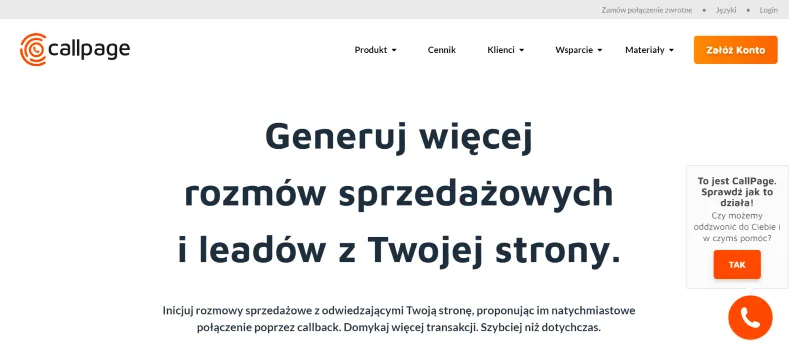
It had to catch on, and it did. The proposition of immediate contact is a value that is hard to beat. While cold calling is a nightmare for all mobile phone owners (and telemarketers), the on-demand call hits the nail on the head. It's a mutual benefit for the website user and the company using this solution.
CallPage.pl makes an accurate value proposition to business customers. More leads, more deals. And faster. I don't know about Adam, but I'm convinced.
Shortening the (spatial and temporal) distance between the company and its prospective customers seems an interesting and convincing Value Proposition.
Example of Value Proposition: Hotjar.com
Anyone who has ever tried to learn and failed will understand. Anyone who, even once during data analysis in Google Analytics, ceased believing that these numbers mean anything at all will understand. I tried, failed, and understood. It's a pleasure to use Hotjar.
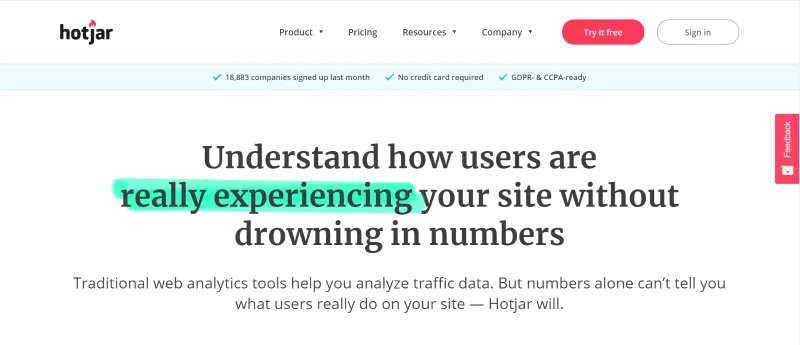
I didn't want to drown in columns filled with numbers. I wanted to see how the users use the website and what they really do. And I saw. The clear allusion to GA in Hotjar's value proposition to many may sound like a harbinger of sweet revenge.
At last, somebody brought the monopolist down a peg or two and showed everyone that analytics could be more human and user-friendly. And it's no exaggeration or unnecessary arrogance. The Hotjar.com team made me a promise of added value and was able to keep it.
Example of Value Proposition: Netflix.com
The confidence with which Netflix assures you that you can cancel anytime is disarming. Nothing strange, but usually, such assurances can only be found in terms and conditions with a magnifying glass.
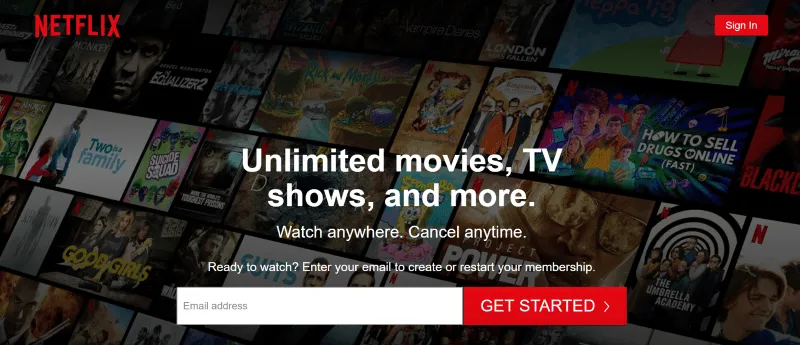
By the way, Netflix's Value Proposition sounds a bit like it was written by someone with a wicked sense of humor. "Watch anywhere. Cancel anytime." "If you can, heh heh."
You could add with a sneer but without resentment. We all like Netflix, after all. Adam even got fired because he preferred extreme binge-watching to working.
Only drug dealers are more confident about their stuff's addictive potential. But you must admit that faith in its own attractiveness is persuasive. Soft spot for Netflix as an added value? Works for me!
Example of Value Proposition: Periscope.com
Another example of self-confidence. Based on the conviction that you are good at what you do. And another example of a value proposition made provocatively and unexpectedly.
"We are different. Different is good. We do things people love. We are independent." The conformists will not like this statement, but the conformists are not the target of Periscope.com.
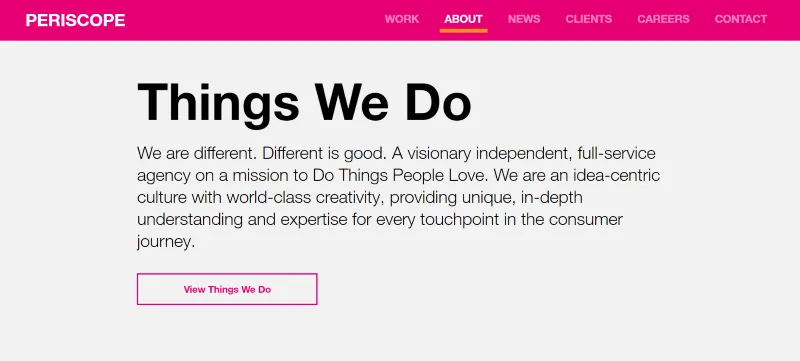
They should be praised for that. These claims sound genuine and sincere. They do not strike a pose or feel like a marketing talk about "revolutions."
You can identify with this independence and feel a part of something bigger while maintaining the feeling of being free and independent. It's an excellent example of a Value Proposition appealing to the emotions, identity, and social functioning of Periscope users.
Example of Value Proposition: Symmetrical.ai
I love the English slogan "Bringing financial power to you." It smacks of breaking existing standards and customs.
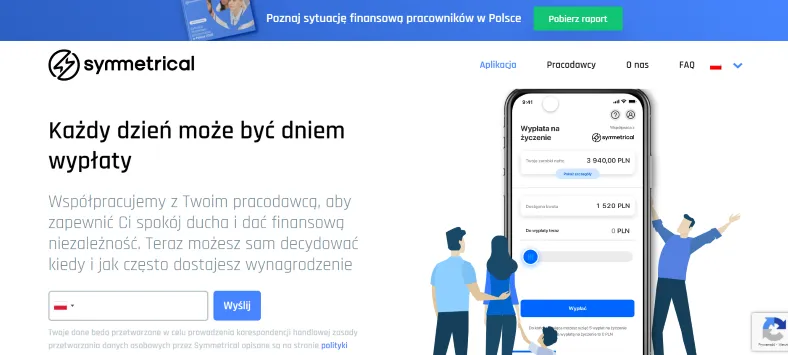
Payment on demand sounds really fresh and gives you the feeling that the pay for work is not a holiday celebrated once a month but a resource you can use daily. Something like a well; only you can see the bottom. Still, it sounds like fun.
There is only one but. The independence of the payment from the time and work does not necessarily have to be well received by the employers. But the Value Proposition itself sounds pretty unique, regardless of whether the idea catches on or not.
And this is the end of our story about Value Proposition. Adam says hi to all cyclists and Netflix fans.





